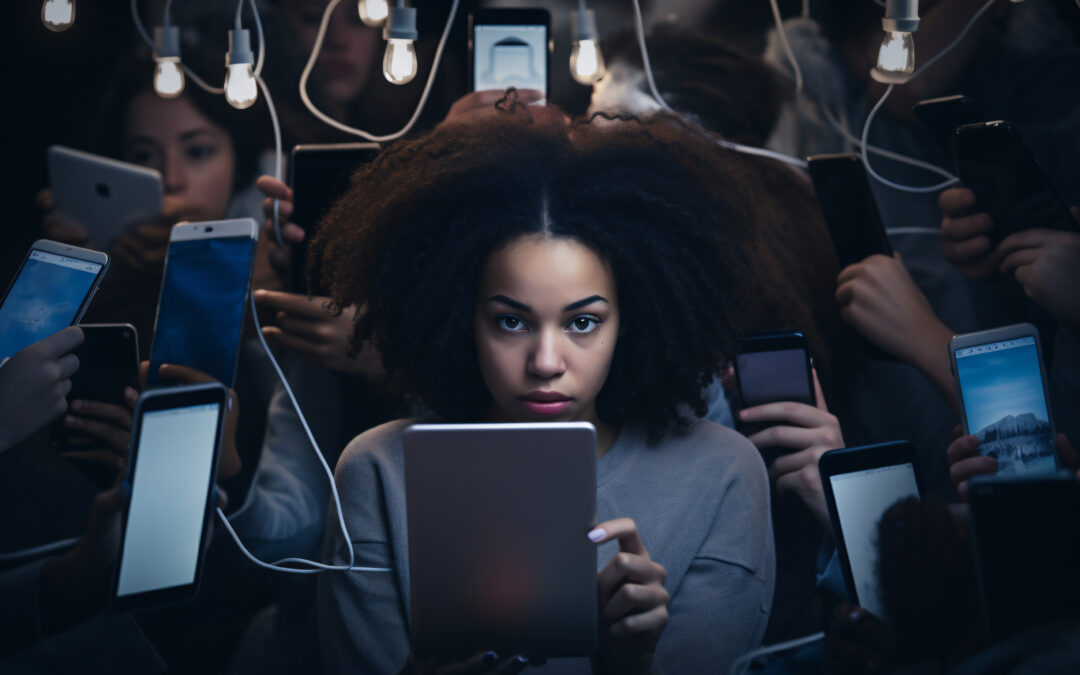AUTHOR: TYRUS ONYANGO – Entrepreneur in media and tech. +254 710734964, Email: tyrus@gic-convo.com Nairobi, Kenya.
What is the effect of social media on traditional media, for example live TV,print and more importantly, what’s next in media and tech?
Perspective 1 – Social Media’s Disruption of Live TV
Social media has fundamentally changed the way people consume content. Live TV once had a monopoly on “real-time” events breaking news, sports, and political debates. Now, platforms like X (Twitter), TikTok, twitch, and YouTube live streams often beat traditional channels at speed, reach, and interactivity. Instead of passively watching, audiences participate: commenting, sharing clips instantly, or even fact-checking broadcasters in real time. Some of these broadcasters include @ishow speed, @kai cenat and many more.
Mainstream media stations like K24. Switch Tv and Kiss Tv were affected and some went digital.
Perspective 2 – Challenges to Traditional Media
- Declining trust and viewership: Younger audiences rarely tune into live TV unless it’s sports or mega events (World Cup, elections).
- Revenue shift: Ad budgets are migrating toward social platforms with better targeting.
- Fragmented attention: Viewers multitask, watching live TV while scrolling on their phones.
- Watching on the go, options that were available on tv are now available in the palm of our hands
- Gadgets like smart tv/android tv offer a better viewership spectrum (what is your favourite t.v brand, tag them)
- More interesting content on social media than traditional media
What is your experience on this perspective, submit the conversation www.gic-convo.com
Perspective 3 – Opportunities
But traditional media isn’t dead, it’s adapting for example the daily show’s posts. Many networks stream simultaneously on social platforms, turning anchors into influencers. TV is no longer just a broadcast, it’s part of a broader content ecosystem. For example NTV short form content on tiktok. What other media stations play in this new dispensation?.
So, what’s next in media and tech?
- AI-driven personalization Content feeds will get hyper-personalized, possibly even AI-generated anchors or shows tailored to individuals. On the flip side there are deepfakes that could be used to target companies and individuals.
- Immersive media AR/VR experiences will blur entertainment, news, and gaming. Instead of watching the news, you may step into it virtually.
- Decentralized platforms Blockchain and Web3 could give rise to creator-owned media ecosystems where users also share revenue.
- Shoppable content TikTok and YouTube are already integrating direct commerce. Soon, live media will merge seamlessly with shopping, education, and interaction.
- Hybrid “phygital” experiences Events will exist simultaneously in physical venues, on TV, and in social media worlds blurring boundaries completely.
If I were to wrap it up in one sentence: Social media has turned live TV from the main stage into just one of many screens and the future of media is about interactivity, immersion, and personalization
What are the monetary opportunities?
Let’s zoom into the monetary opportunities that are opening up as social media disrupts live TV and new tech reshapes media:
1. Advertising Reinvented
- Targeted Ads: Unlike traditional TV’s broad reach, social media offers hyper-targeted ads (demographics, interests, behavior). Advertisers pay more for precision.
- Interactive Ads: Viewers can click-to-buy directly from livestreams, sports events, or even news coverage.
2. Livestream Commerce
- Platforms like TikTok Shop, Instagram Live, and YouTube Live Shopping show how content + e-commerce are emerging, examples include alibaba.com
- This model, already huge in Asia, is spreading globally. Hosts can sell products in real time, and brands pay influencers as much as networks once paid for primetime slots.
3. Subscription Models & Microtransactions
- Paywalls & Premium Content: Traditional media is moving toward digital subscriptions (e.g., Netflix, Disney+, paywalled news), patreon.
- Micro-payments: Social platforms are testing tipping, “super chats,” or small payments for exclusive clips. This creates revenue even from casual fans for example tiktok.
4. Data & Analytics as a Commodity
- Media companies can monetize audience insights by selling anonymized behavioral data to advertisers, brands, and researchers.
- Predictive analytics powered by AI also creates consulting opportunities for media houses.
5. Influencer & Creator Economy
- Brands shift budgets from TV ads to partnerships with creators who command niche, loyal audiences(Kaluma boy)
- Opportunities for co-branded content, sponsored livestreams, and affiliate revenue.
6. Tech-Driven Content Experiences
- Virtual & Augmented Reality: New revenue streams from immersive events (e.g., watching a concert or sports game with VR tickets).
- AI-generated content: Cost-saving for studios, while opening monetization avenues for personalized media.
7. Hybrid Events & Phygital Media
- Imagine a political debate aired on live TV, simultaneously cast on YouTube, clipped on TikTok, and enhanced with AR filters. Each layer offers its own sponsorships and product placement deals.
- “Phygital” events also allow ticket sales, sponsorships, and fan engagement across both physical and virtual spaces.
In short: The money is shifting toward interactivity, direct to consumer sales, and data driven advertising. Live TV isn’t vanishing, but the biggest growth is happening where social media and commerce overlap.
Would you be willing to invest in systems that can propel this forward….lets talk
Who should join the conversation?
People who want to leverage social media and tech to make money including Digital content creators, Streaming platforms, Mainstream media and more.

